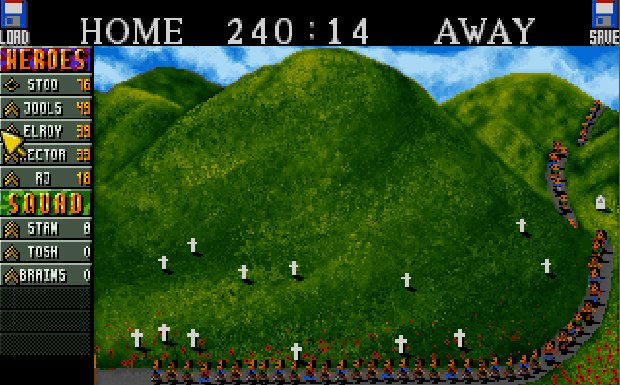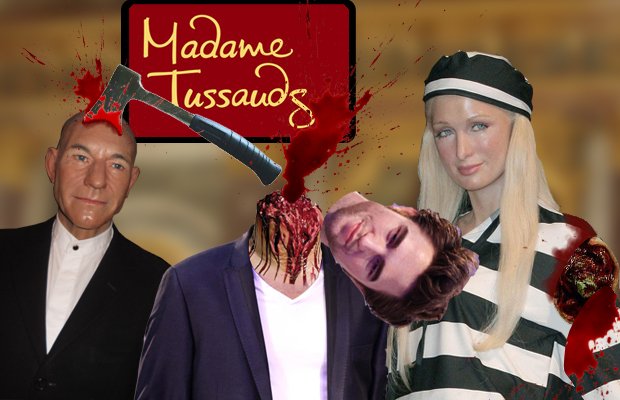Deeply disturbing deaths from retro games
What, you thought horrifying mortality was the sole preserve of modern gaming?
For the second time in this feature, I am making a reference to David Cronenberg. And not simply to flex my cinematic ego by showing off which respected left-field directors I like. No, I mention Cronenberg again because his horror work is highly relevant to what makes this particular death so unremittingly grim.

Above: And this is why Cronenberg was never allowed near the Tomb Raider movies
Cronenberg’s aptly-termedBody Horror, you see, is concerned primarily with fear of physical change; the idea of a person’s own body rebelling against them in an inescapable invasion on and by everything they are. Bad times, particularly when it all goes a bitGoldblum.
And that’s why Lara’s transformation into a gold statue in the first Tomb Raider is such a harrowing death, however brief it may be. In fact the speed at which it happens is part of what makes it effective.
Lara has just enough time to acknowledge each and every one of her limbs being stolen away from her and turned into cold, alien metal objects, but the speed with which it all happens (along with her rapidly stiffening animation and the uncompromising sound effects) turns the transformation into a visceral attack. And as in all good Body Horror, she becomes increasingly powerless to stop what’s happening precisely because of the nature of what’s happening. It’s a self-perpetuating horror that gets stronger with each and every second.
Also, the camera angle shows that early Lara was a bobble-headed freak with no eyes. Get thee to Silent Hill, woman!
Cannon Fodder %26ndash; Multi
And while we’re talking aboutstolen humanity, there was some even bleaker death going around in the early ‘90s that didn’t even need polygons. Or in fact, more than about nine pixels per victim.
Weekly digests, tales from the communities you love, and more
Where Lara’s Midas-induced death was a very personal and intimate horror, Cannon Fodder’s downright horrible treatment of character mortality was all about the wider context and bigger socio-political picture.

Above: Even when using only a handful of pixels, video game death can be poignant
An arcadey RTS which saw you controlling small groups of tiny pixel soldiers, Cannon Fodder sucked you in with cute, cartoony presentation and then bludgeoned you to death with the nightmare futility of war. It had a very clever (and quite literal) lives system, you see. If you failed a mission by having your whole squad wiped out, your next go would present you with a different set of soldiers, with different names. Every character you used in Cannon Fodder had a name, and repeated use of one would see him rank up. You got incredibly attached to those little fellas, but when they were gone, they were gone forever.

Most affecting of all though, was the pre-mission retry screen, whichmade absolutely sure you knew damn well where those replacements were coming from. A queue of civilians lead to the door of the army recruitment office, and stretched all the way to the horizon. The other thing that stretched all the way to the horizon? A hillside graveyard. Every time one man died, another gravestone appeared on it. And every time a gravestone appeared, another man walked in through the door to replace him. Suddenly the game’s title wasn’t such a flippant joke any more.
The Legend of Zelda: Ocarina of Time %26ndash; Nintendo 64
Sorry, got a bit serious over the last two entries. Here, let’s lighten the mood by looking ata small Elf boy getting pseudo-bummed by azombie:
Redeads. Bloody horrible. Horrible physicality, horrible sound, horrible stillness as they stand there waiting for their next warm victim, and horrible, horrible, uncomfortably intimate attack animation that strikes out of absolutely nowhere.
Seriously. Kill them. Kill them with fire. Kill them with fire, then encase the ashes in a lead capsule, weld it shut, fire it light years through space to a dead planet, encase that planet in lead and then launch it into a black hole. Then burn the black hole.
Waxworks %26ndash; Amiga/PC
And saving the most extravagant for last, we have Waxworks. The 1992 dungeon-crawling adventure game, spawned from a successful series of games based on theElvira filmsand TV show revels in graphic gore like a basement-dwelling psycho revels in human-skin furnishings and poo-based décor.

Above: Some Waxwork museums have a chamber of horrors. Waxworks the game didn't have anything else
Created by Horrorsoft, an offshoot of Adventuresoft, the studio later responsible for the Simon the Sorcerer series, Waxworks did not, to put too fine a point on it, f*ck around. A time-travelling adventure that charged you with the task of ending a generations-long curse put on your family by a witch, it wouldn’t let a death go by without trying to horrify you onto a serious course of medication.
Every method of character demise – and there were many – came packing its own arrestingly detailed, partially animated close-up. Rendered with the gratuity of a ‘70s exploitation film and the anatomical correctness of a medical textbook, they’re cold and detatched yet gruesomely lurid all at the same time. It’s an unsettling combination, but mesmerising all the same, and as any gore hound will tell you, that’s a good thing.
Nov. 26, 2010


The Top 7... Gory deaths in cutesy games
Disturbing images you were never meant to see

100 Deaths of Mario
Reasons why insurance companies steer clear of this plumber

Five in-game deaths that actually made us sad
Death in games is cheap. Here are some bereavements that really mattered



